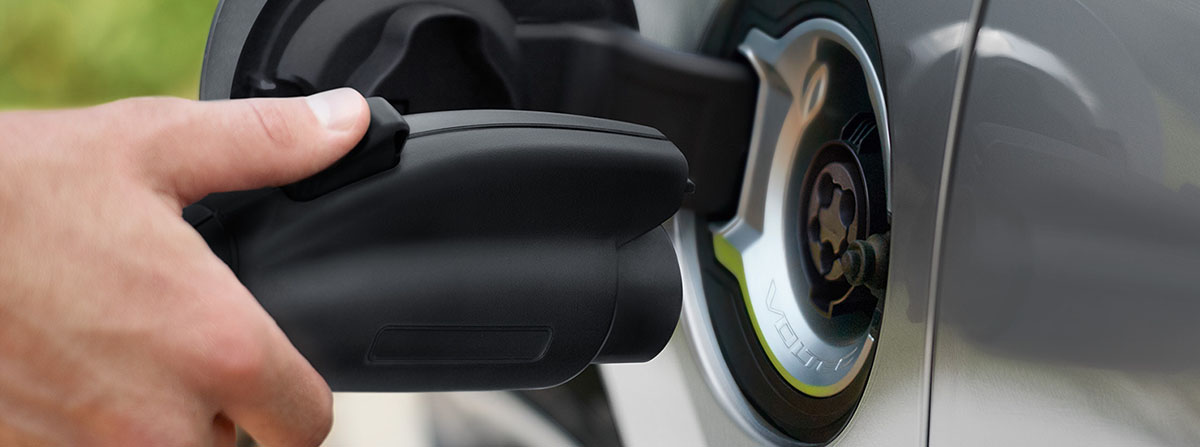
 Your Credit Estimate
Your Credit Estimate
 Your Credit
Your Credit
Your zip code helps us provide you with the most accurate vehicle pricing and vehicle availability.
We estimate your credit score to give you an idea of your monthly payments. To get an accurate payment amount, complete our credit application by clicking the Start Credit Application button below.
start credit application
The auto market is changing in a big way. Over the next decade, many automotive groups have promised to change their lineup to consist of more eco-friendly vehicle options, such as plug-in hybrids, electric vehicles (EVs), and even hydrogen fuel cell vehicles are slowly gaining popularity amongst automakers. All you need is a little water and electrolysis for the last one, and we’re sure big oil is fighting that one as long as possible. For now, the European Union gets a little stricter every year on CO2 emissions, and to make the cut, every automaker needs to add more alternative fuel vehicles and less gasoline chuggers. Why it’s taken so long is the slow adaptation by the auto market to also make the shift. Many consumers are worried about the practicality of a plug-in hybrid, or even a battery-electric vehicle (BEV) when gas stations are found everywhere and EV charging stations are usually tucked away in a parking lot somewhere. Automakers intend to change that, starting with the infrastructure of the land.
New Bill, Who This?
In November 2021, the House passed a large U.S. infrastructure package, investing $7.5 billion to build a new network of EV charging stations across the country. This change will not only make EVs and plug-in hybrid electric vehicles (PHEVs) more practical, but will help put consumers to ease about finding an EV charging station. Instead of navigating their way to a parking lot or parking garage, or using an app to find the closest available charging spot, EV charging stations will soon become as common as gas stations. With a total of 500,000 EV chargers planned for construction, we can see a lot of highway signs needing updates for rest stops including EV charging as well as fuel pumps. In addition to this new bill, the U.S. Departments of Transportation and Energy recently announced a new investment of nearly $5 billion into the new National Electric Vehicle Infrastructure (NEVI) Formula Program established by President Biden’s Bipartisan Infrastructure Law to expand the national electric vehicle charging network.
Automaker Approved
With automakers making the shift, many are also pulling their weight to make the change as easy as possible. In 2019, Volkswagen and General Motors started new partnerships to construct more EV charging stations around the country. VW partnered with Electrify America, an organization that has become very popular recently, and General Motors partnered with construction firm Bechtel Corp. The latter is working on building fast-charging stations, but are also looking for funding. VW on the other hand is already investing $800 million in California and a total of $2 billion nationwide. Of course, like we mentioned, even with 180 more charging stations planned, they’re all going to be installed at Walmart stores.
Spreading the word for the Jeep 4xe lineup, Jeep raised awareness through a partnership with Volta Charging Stations to start a sort of marketing campaign. Jeep also partnered with Electrify America, back in 2021. The partnership with Jeep was a little limited, installing only three EV charging stations at three of the most popular off-road sites and iconic trails found through the Jeep Badge of Honor program. To keep it green, when possible, the Jeep 4xe Charging Stations will collect solar power to generate electricity.
Also partnering with Electrify America is Kia America. This one is more about adding an incentive to purchasing a new EV, aside from the $7500 federal tax credit. The new partnership between Electrify America and Kia America grants new owners of a Kia EV6 1,000 kilowatt-hours (kWh) of complimentary EV charging/energy. It may not sound like a lot, but to put it into perspective, the new Kia EV6 has an EPA rated all-electric range of 310 miles when equipped with a 77.4 kWh battery and rear-wheel drive (RWD). 1,000 kWh is equal to about 3500 – 4000 miles. The average person drives a little over 1000 miles every month, maybe even less after the pandemic caused remote work positions and delivery services to increase. That’s several months of free charging just for purchasing a new EV.
Now, do EVs and plug-in hybrids still seem impractical? In the next few years, EV charging stations should be easy to find, whether shopping for groceries, or on a road trip. Shop for an EV online with NowCar today.